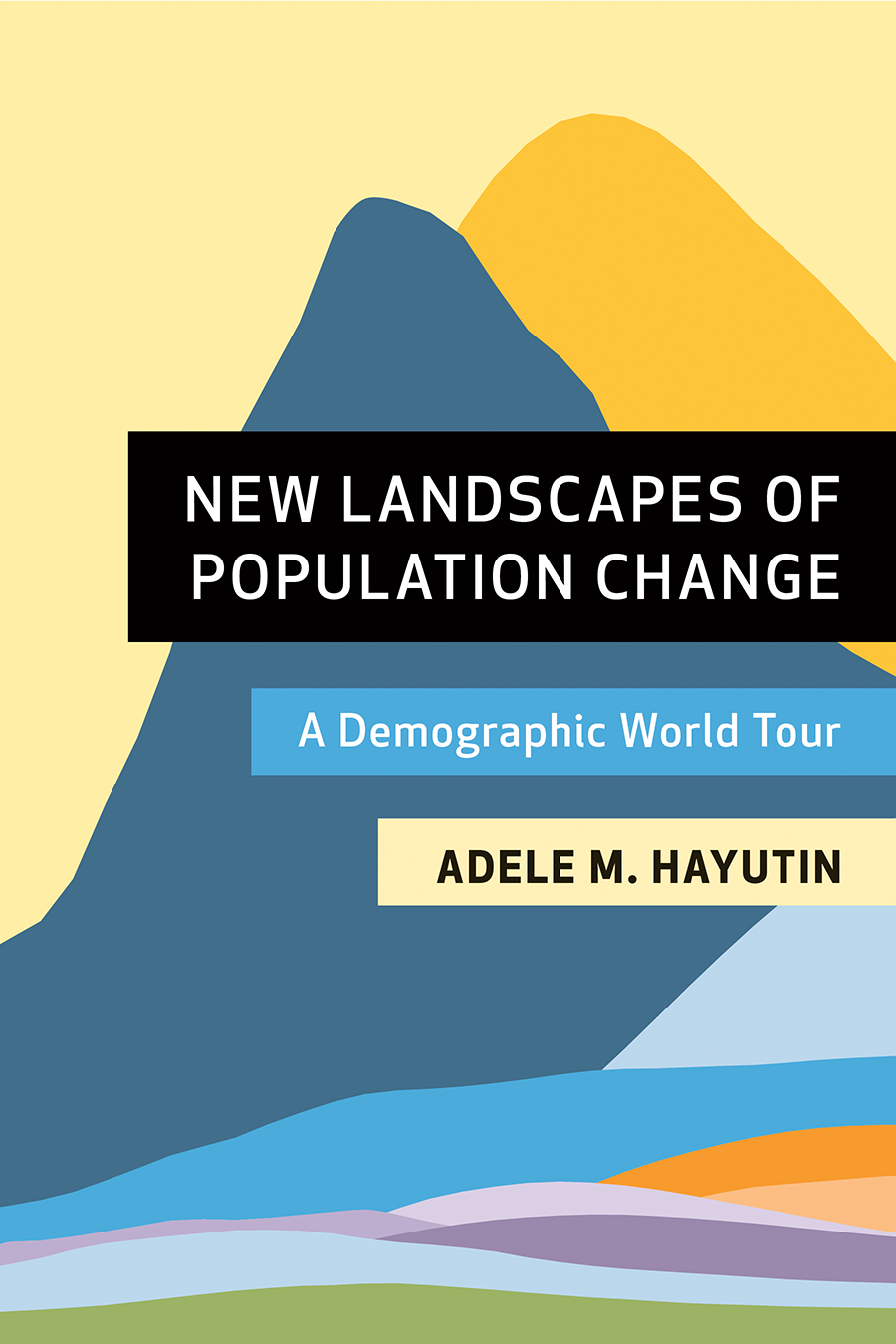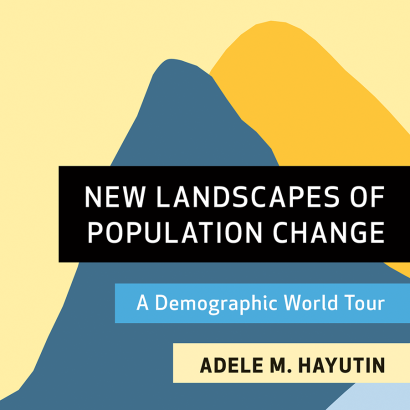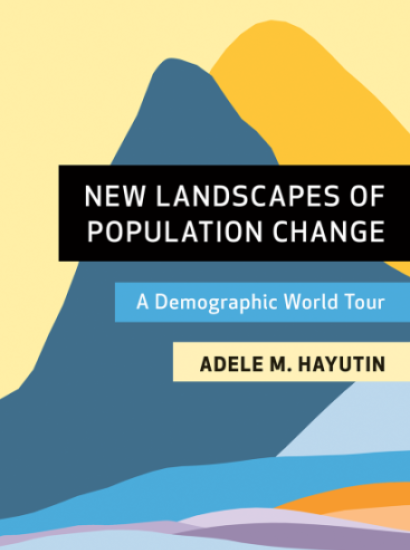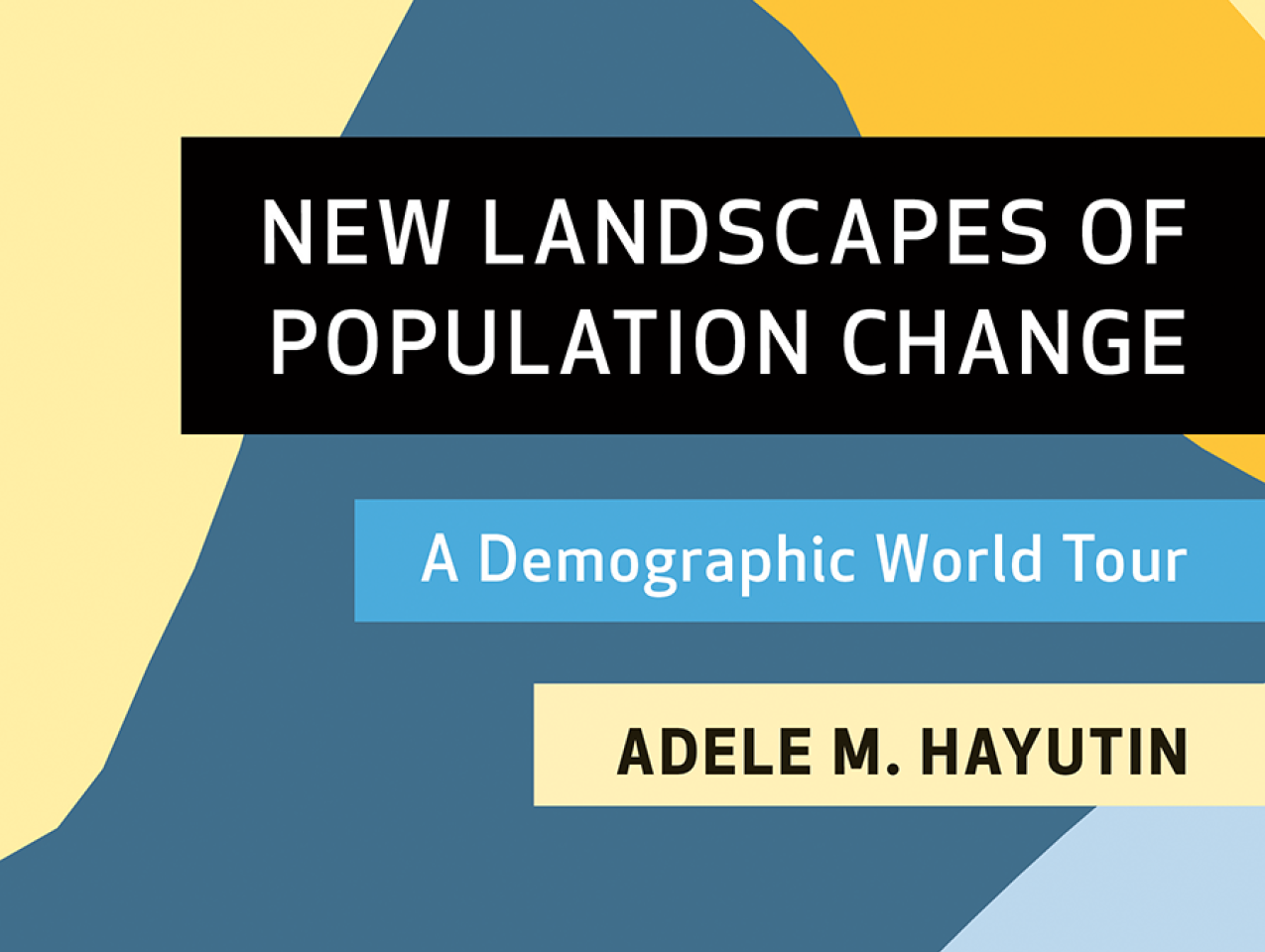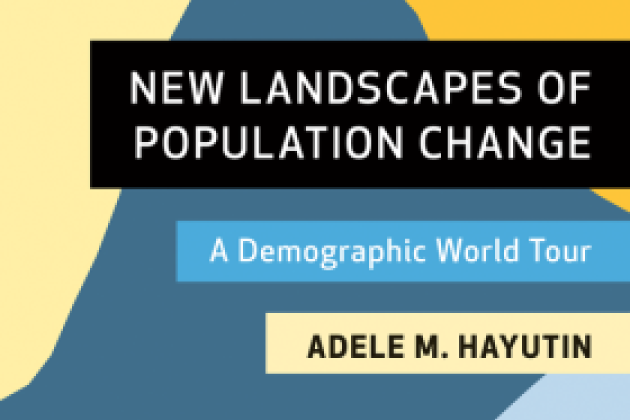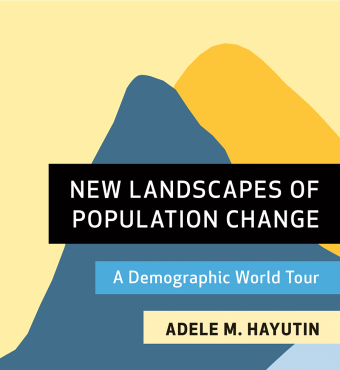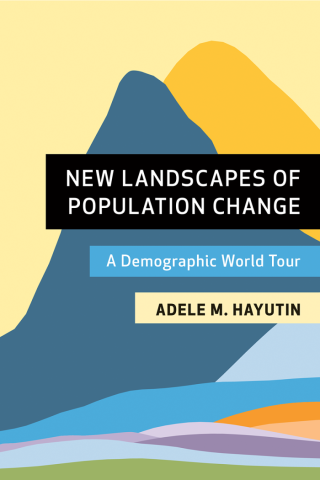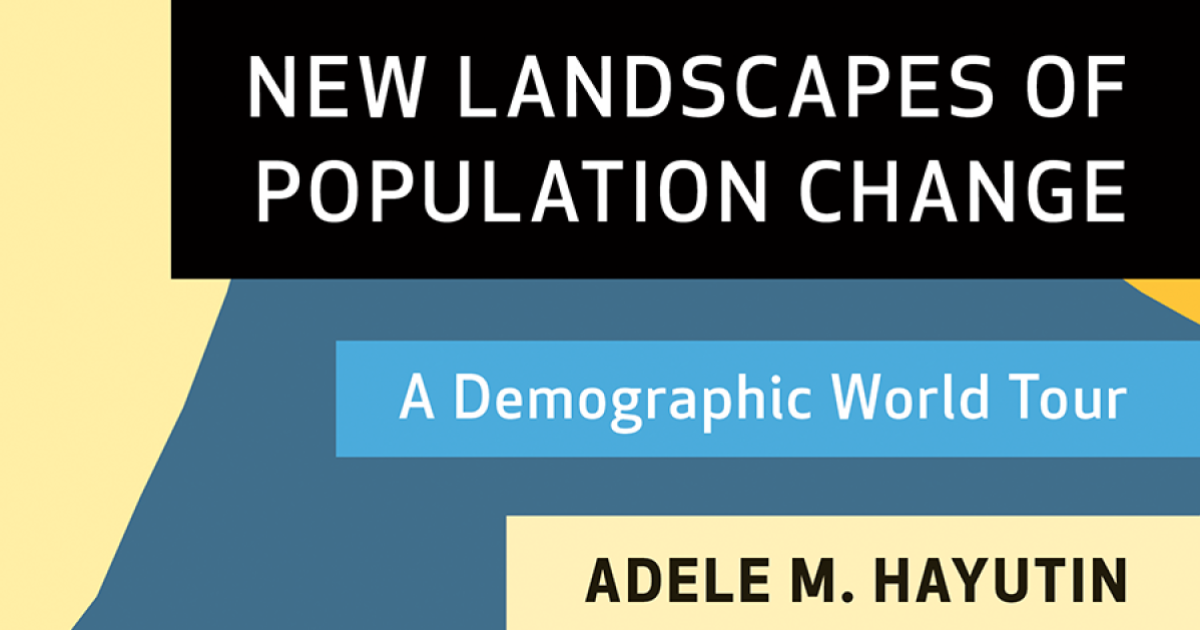Adele Hayutin is a business economist and Annenberg Distinguished Visiting Fellow at the Hoover Institution, where she focuses on the economic and policy implications of global demographic change.
In this Q&A, Hayutin discusses her new book published by Hoover Institution Press, New Landscapes of Population Change: A Demographic World Tour. In the book and in this interview, Hayutin explains that the world is experiencing unprecedented demographic trends that will have future consequences for economic growth and stability and national security.
Since the 1950s, dramatic drops in fertility have been accompanied by increased life expectancy. These trends began in advanced industrialized economies, such as the United States, Japan, and many European economies, and persist today among lower-income nations.
Fertility rates have declined throughout the world but remain high in most African countries. As a result, over the next 30 years, that continent will account for 60% of global population growth. This matters, Hayutin explains, because less developed African countries are more vulnerable to environmental disasters, poverty, disease, and resource constraints. Consequently, Hayutin argues, there are likely to be more surges of refugees away from that continent and toward more advanced economies
Hayutin demonstrates that comparative studies such as New Landscapes of Population Change are important because they provide policy makers and private-sector leaders with a framework for understanding how to address issues impacting their societies and economies, including adapting to workforce changes and expanding access to health care and educational opportunities. This study also provides a lens for discovering how to engage in policy areas (including trade, investment, and immigration) with foreign nations that face their own demographic challenges.
Why did you write New Landscapes of Population Change?
Adele Hayutin: My goal was to make demographic information and analysis accessible to a broad audience, including policy makers, business leaders, and the interested public. I wrote the book to show how key population drivers—fertility, life expectancy, and migration—will combine over the coming decades in ways that threaten economic security and political stability.
I believe if you understand global population change, you can better understand news about global events. To help readers develop a broad global perspective, this book illuminates similarities and differences across countries and regions. I organized this comparative framework around key population drivers and demographic outcomes, including shrinking workforces and aging populations.
The book is actually a demographic world tour, taking readers around the world to show them how countries differ on key dimensions. By following the tour, readers will learn to use demographics as a window on the future.
You begin your book by explaining, “We are in uncharted demographic territory across the globe.” What makes the situation so different from the past, and what makes it so challenging?
Adele Hayutin: On the surface it may look like the current situation represents a continuation of two key long-term demographic trends: declining fertility and increasing life expectancy. While these trends are indeed projected to continue, the overall demographic situation will not simply be an extrapolation of the past for several reasons.
First, the trends are growing in scope; they are truly global, not just affecting the advanced economies, but extending worldwide.
Second, there is increasing diversity in how these trends are unfolding. In other words, the timing and pace of change differs dramatically around the world and across countries.
Third, the pace of change is increasing, and consequently, these trends are gaining momentum and impact.
And most important, as the key trends take hold in individual countries, they are interacting in ways that lead to more extreme outcomes. The combined and cumulative effect of the key drivers has led us into uncharted territory, which includes more old people than ever before and fewer and fewer children. We already see rapid population aging and can expect population declines in many places. But we also see two divergent population trends: some populations are starting to shrink while others are growing explosively.
In the first part of the book, I look at the drivers separately to show how the future will unfold differently from the past and differently across countries.
The first key driver is fertility, or number of births per woman. That number has been declining worldwide for quite a long time. The worldwide fertility rate has fallen by half since 1965, from five births per woman to around two and a half births per woman. I would note that all countries have had declining fertility, but the pace and timing differ by country. Some countries had very steep declines beginning in the 1960s, and some didn’t begin declining until much more recently.
The second key driver is increasing life expectancy. This trend is also global, but again, it differs by country in terms of timing and pace. Many countries had large increases in life expectancy in the 1950s and 1960s, while others have had more gradual increases. Most countries experienced increases in life expectancy due to basic improvements in sanitation and medical care. Such changes greatly reduced childhood mortality, which led to increased life expectancy overall. In general, the positive trend of increasing life expectancy has continued. Exceptions to the upward trend stem from specific events such as war, famine, or, as we just experienced, pandemics. Sometimes such events lead to a temporary dip in life expectancy and countries quickly recover. In other cases, a country’s long-term health is more severely affected by the event and the country ends up on a lower trajectory. But in general, the pattern is upward.
Those two trends, declining fertility and increasing life expectancy, are now interacting to create major demographic changes, including dramatic changes in age composition. There are fewer and fewer children, which eventually results in fewer workers, and more people are surviving to older ages. Some youthful countries temporarily benefit as the number of children declines and the share of working-age population increases, but many other countries face increasing economic challenges as the number of workers per retiree declines.
The speed of changes adds to the challenge. The changing support ratios (workers per dependent) in themselves pose challenges, but the pace of decline or increase makes adjustment more urgent. In the past, the changes in age structure and resulting support ratios were more gradual, but in many developing countries, these changes will happen much faster. For example, the US and most European countries have had a much slower pace of aging and have had four or five decades to adjust to the changes in their age structures. In contrast, many developing countries will age two to three times faster and therefore will need to more quickly prepare for their new demographic situations. Similarly, those countries with potentially beneficial increases in the share of working-age population—called a demographic dividend—must quickly adapt to leverage the benefit.
In addition to the speed of change and the resulting need for individual countries to quickly adapt to their own demographic challenges, countries also face challenges posed by the changing global context. We have never had so many countries with below-replacement fertility and declining support ratios. These changes will affect economic growth, as well as political stability and national security.
Which aspects of these demographic changes are particularly surprising or striking? What is driving these dramatic changes?
Adele Hayutin: Several especially dramatic changes are unfolding. Although they seem surprising at first, when you look at the data, you see these projections are more startling than surprising.
One of the most dramatic changes is the continued explosive population growth in Africa. Even though Africa’s population growth has slowed, it is still higher than elsewhere. As a result, Africa’s share of world population will dramatically increase. This global population shift to Africa means that most global population growth will occur in the most vulnerable and least developed countries.
Another startling change involves China. While it is well known that India will soon overtake China in total population, it is less well known that China’s total population is already declining.
Such uneven population growth across countries will lead to a notable re-ranking of the most populous countries. Nigeria is projected to double its population and will skyrocket past the United States to become the third most populous country before midcentury. Two other fast-growing African countries—Ethiopia and the Democratic Republic of the Congo (DRC)—will soon join the top ten most populous, replacing Mexico, which is still growing, and Russia, which is already shrinking.
Global population will remain highly concentrated in a relatively few countries. In 2020 the 10 most populous countries accounted for nearly 60% of the world’s population, and the 25 most populous accounted for 74% of the total. It’s no surprise that several of these large countries account for most of the projected population growth. Another startling aspect of the high population concentration is that half of the world’s countries have populations of less than 10 million. And these 100 countries together account for less than 5% of the world’s total.
Another surprise is that women’s life expectancy advantage over men is a global phenomenon occurring throughout the world, although it is most pronounced in the advanced economies. That means countries will continue to have more older women than men. In Russia, for example, even though the large gender gap in life expectancy has been decreasing, there are twice as many older women as men—15 million women age 65 and older compared with 7.5 million men.
In thinking about what drives these changes, we can understand the uneven population-growth rates and the distinct trajectories of growth by looking at the divergent fertility and life expectancy trends.
Many related factors have contributed to the global fertility decline, but most scholars agree that economic development is the principal factor. As societies become more industrialized and less agrarian, fewer children are needed to support a family’s livelihood. Then, as countries continue to modernize and more women become economically empowered, the number of children further declines.
The global increase in life expectancy is a stunning success story: life expectancy at birth increased from 47 years in 1955 to 72 in 2020. The gains differ across countries, but the biggest gains generally stem from basic improvements in public health and sanitation, which not only contribute to overall health improvements but also dramatically reduce infant and maternal mortality. Other gains result from ongoing improved health care and scientific advances. This includes new medications, innovative medical devices, and behavioral changes.
What are some of the consequences of these demographic upheavals, and how do these impacts vary around the world?
Adele Hayutin: The changes in age structure and the divergent rates of population growth have huge implications for economic growth and political stability. The workforce impacts of these demographic changes are especially important. One of the major consequences of declining fertility is fewer and fewer children, which eventually leads to a shrinking pipeline of workers. While fertility is the primary driver, increased life expectancy also affects workforce growth by creating additional labor supply, as more people reach working age and as older people become or remain economically active. International migration can also play a role in supplementing the labor supply.
A country’s arc of workforce growth typically includes a steady increase followed by a slowdown and then decline. The timing of these declines depends largely on the timing and pace of the fertility declines and life expectancy gains within the country. Many countries already have shrinking workforces, and many more will soon follow. My book includes several “landscapes” of workforce growth, with countries grouped by their demographic characteristics.
One of the most striking global consequences of these demographic changes is the impact on the world’s largest economies: workforce growth is already slowing in all the large economies, with many seeing absolute declines. Eight of the 15 largest economies, including China, South Korea, and Japan, face the prospects of continued workforce declines over the coming decades. Many will see the declines accelerate as the impact of sinking fertility rates and the declining number of children fully sets in. India and Mexico are the only two large economies projected to see significant workforce growth, but in both countries, the arc of growth peaks shortly after midcentury and then declines. There are, however, several exceptions to the pattern of workforce decline. Largely due to immigration, the United States, Canada, and Australia are projected to see continued, though slower, workforce growth over the coming decades.
As for the developing countries, while most are projected to see continued workforce growth, many countries that have had large fertility declines will soon begin to see workforce declines. For example, Brazil, Indonesia, and Turkey all face slower workforce growth, with absolute declines setting in after midcentury, or sooner, as in Brazil.
A second major demographic challenge is population aging. The proportion of old people is sharply on the rise, with the highest shares occurring in East Asia and Europe. By midcentury, 16% of the world’s population will be age 65 and over, but by that time, the shares in Japan and South Korea are projected to reach 38%, more than twice the global average. China is projected to see a 26% share of old people by then, up from just 12% in 2020. These high shares pose significant economic and social challenges, but the accelerating pace of aging worsens the challenges, reducing the time available to prepare.
It's important to understand that the share of old people is increasing for two reasons. First, with increased life expectancy, more people are reaching higher age brackets. But more consequentially, fertility declines reduce the number of children and cause the overall age distribution to shift upward. As a result, both the number and share of older people are increasing. It is a global trend, happening everywhere, even in countries with young populations.
The pace of aging varies dramatically around the world, largely due to the different patterns of fertility declines. With already low fertility rates, the United States and many European countries are aging relatively slowly. In contrast, many developing countries with steep fertility declines will age two to three times faster.
A third major consequence stems from the geographic population shifts. As I mentioned above, we will see an accelerating population shift to Africa. We are already witnessing a slowdown in population growth all over the world. However, despite its slowdown, Africa’s population is growing disproportionately fast, and its share of total population is increasing. Over the next 30 years, 60% of all global population growth will occur in Africa. This is startling because many African countries are among the poorest in the world and are the most vulnerable to environmental disasters, disease, and resource constraints. Consequently, we can expect increasing outward migration from Africa.
Another important regional change is the population shift from East to South Asia. In the past, East Asia, including China and Japan, was the most populous subregion, accounting for more than 40% of Asia’s total population. But as population growth rates have diverged, the population concentration has shifted to South Asia, including India, Pakistan, and Bangladesh. This population shift from East to South Asia is projected to accelerate as East Asian populations start to decline.
The shift to South Asia highlights stark demographic differences across the region, especially the contrast between China’s rapidly aging and shrinking population and India’s growing and more youthful population. The population decline in East Asia is especially striking because China and Japan are the second- and third-largest economies in the world, and among the fastest-aging populations. How they adapt to the challenges of declining populations, shrinking workforces, and rapid aging will be important for the global economy.
Do you believe these global trends are manageable? How might countries respond?
Adele Hayutin: Yes, it is possible to manage these trends. It helps to think of two broad approaches for managing population challenges: the first involves directly influencing the demographic drivers, and the second concerns mitigating or reducing the impacts of specific demographic outcomes.
Many current policies target the three demographic drivers. Policies that address fertility, or births per woman, range from reproductive health policies and distribution of contraceptives designed to reduce fertility to pronatal policies that seek to incentivize higher birth rates. Examples include the UN’s family planning and economic development programs, as well as China’s restrictive one-child policy and its reversal, followed by adoption of a pronatal three-child policy. Another example is the reliance on girls’ education in Africa as a promising tool for reducing high fertility rates. Although some countries have adopted pronatal policies to raise their birth rates, there is little evidence that these are effective.
The array of policies and practices affecting life expectancy, the second driver, is also large. Public health initiatives that promoted public sanitation have been responsible for major increases in life expectancy around the world. Many other public health programs have also contributed to improved health status and longer lives. These policies cover the life span, from reducing infant mortality to reducing diseases of old age; in addition to public sanitation, examples of such policies include highway safety and vaccine distribution programs.
Policies affecting international migration, the third driver, are increasingly in the news, as many countries grapple with trying to protect border security while also achieving economic, humanitarian, and political goals. As international migration increases, whether spurred by economics, climate change, or political disruption, developing effective policies will be increasingly important.
Managing demographic outcomes, such as aging populations and shrinking workforces, is also quite feasible. I illustrate in the book that it is possible to see the demographic changes on the horizon, and because we can see the changes coming, we should and can be ready for them. Indeed, it would be irresponsible not to prepare for the coming demographic shifts. Adapting to the coming changes should involve policy makers at all levels of government and community leaders, as well as individuals and their families. While governments focus on public policy issues and address social security and immigration policies for example, individuals can be developing strategies for themselves, their families, and their communities that take into account how demographics affects their housing, education, and career choices.
Policies that address the possibility of shrinking workforces provide good examples of ways to adapt to the coming changes. The equation for economic growth illustrates how policy interventions would work. The equation for GDP, specified as a function of two variables—labor supply growth and productivity growth—prompts us to consider policies affecting each variable, i.e., policies that would increase labor supply and policies that would increase output per hour. Labor supply policies include boosting the labor force participation at all ages, especially among women, and expanding the definition of working age to include older ages. Providing day care and offering flexible hours are other practices implemented as methods for increasing and maintaining female labor force participation. Increased immigration is another option for supplementing the labor supply. On the productivity side, additional education at all ages and technology innovations are two critical options for improving the output of the existing labor supply. Retraining of older workers is an example that could both increase labor supply and improve productivity.
How well countries use such policies will have enormous consequences for their own economic growth and national security as well as for global security.
What policies can US leaders adopt to ensure that America has a strong demographic future?
Adele Hayutin: The United States has many policy options for ensuring a strong demographic future. In thinking about such policies, it is important to first recognize that the US has demographic advantages that we can leverage: the US is relatively young compared with other advanced economies; we have a growing working-age population; we have a smaller share of old people than other advanced economies; and the share of old people is increasing more slowly in the US than elsewhere, which means our overall age structure is more stable.
We should learn about these competitive advantages and implement policies that leverage these strengths. I’ll mention a few policies that are important for further consideration:
First, improved K–12 education is necessary for leveraging our youthful population.
Second, we need to implement policies to attract and retain both high- and low-skilled immigrants. Our workforce growth depends heavily on immigration. While workforce declines are projected for many large economies, the working-age population in the US is forecasted to continue growing, due largely to continued immigration. Assuring continued immigration is necessary for our economic growth.
Several other workforce policies are also important for leveraging our demographic strengths. Assuring labor supply growth at all ages is critical. Policies to increase labor force participation rates include offering flexible work hours, remote work options, and childcare benefits, as well as other family-friendly workplace practices.
Another policy priority for assuring labor supply involves retraining workers at all ages so their skills are suitable and adaptable as our economy changes.
Attracting and retaining older workers is increasingly important as growth in the population of younger workers slows.
Turning to health and well-being, several policy challenges are evident. The recent dip in US life expectancy is alarming, and we need to address the causes. The opioid crisis and the obesity epidemic are just two examples of health care threats that pose enormous costs for society.
Our demographic mix and our aging population point to critical financial concerns. We should continue to discuss options for raising the eligibility age for Social Security benefits and review Medicare entitlements as well.
Health care costs have consumed an increasing share of public and private spending, making it even more important to develop policies that will reduce the health care burdens at all ages, and especially at older ages. In developing such policies, we need further research on ways to reduce the health care and social costs of Alzheimer’s and other dementias. Another policy priority should be evaluating the contributions of prevention and wellness programs toward reducing health care costs and improving quality of life.
Is there anything else you would like to add that I have not asked you about?
Adele Hayutin: I want to reiterate the premise of the book: understanding demographic dynamics will help you better understand news about global events. The recent news offers several examples of challenges rooted in demographic change, including the implications of China’s shrinking workforce for its global ambition; India’s increasing economic strength and the growth of South Asia; the implications of Russia’s weak demographics for its military strategy; and the role of immigration in countries where anti-immigrant sentiment is rising.
Another key idea in the book is that you can use demographics as a window on the future. Because it is possible to see what is coming, it would be irresponsible not to prepare. We should engage with our policy makers to address broad policy questions, and we should also develop personal strategies for addressing the issues that directly affect us, including housing, education, careers, and health care.
As you think about the cast of characters in the book, you will see that each country has its own demographic strengths and weakness and that these in turn affect their policy priorities and behaviors. We should pay close attention to how our partners and adversaries adapt to demographic challenges, because their reactions will affect our own economic growth and national security.
Based on what we already know about key demographic drivers, we can be reasonably confident in demographic projections, and we can assess alternative scenarios that account for major uncertainties. Such projections are not like earthquake forecasts that warn of destructive seismic activity coming within the next 30 years. Dramatic demographic changes are unfolding now, not starting sometime in the future. I suggest in the book that we should each have a Demographic Preparedness plan that anticipates how we will deal with the coming demographic changes. Such a plan, unlike an earthquake preparedness plan or a business interruption strategy, should not be an emergency plan. It should be a long-term strategy for adapting to the major changes we -know are coming.







